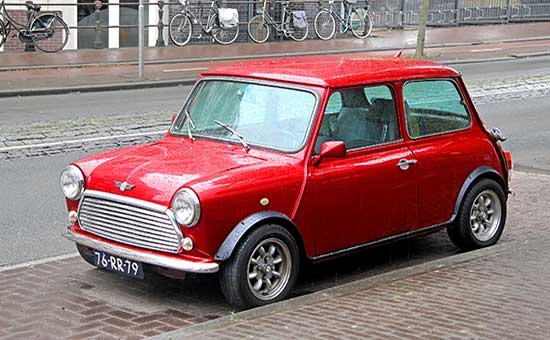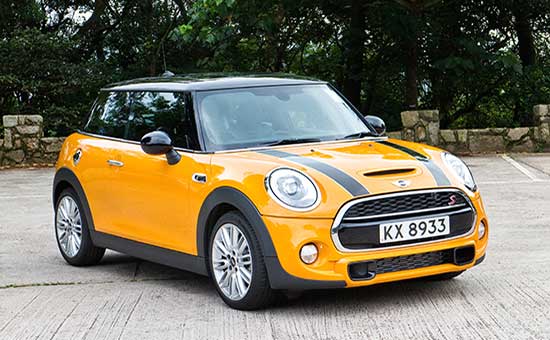The MINI: At Globalization’s Crossroads
Not too long after World War II, the United Kingdom was second only to the United States as the largest builder of cars, and the biggest exporter.
Think about the world order in those days: This was before the auto industries of Japan and Germany, or for that matter, China began exporting their products. Auto factories throughout much of Europe were in their post-war ruins. England saved its steel for its own major exporting businesses – notably, cars.
And in postwar America, returning GI’s and their baby-booming families demanded more new vehicles than the American auto industry could supply.
The British cornered the market on the sports car. Iconic names like MG, Riley, Singer, Triumph, Sunbeam and Austin Healey had the ability to make Americans swoon with their top-down, low-cost, cheeky by-the-mile fun.
The future looked very bright indeed; yet less than three decades later, most of these brands were gone: either swallowed up in another merger, or in receivership. What might have looked like labor unrest or supply chain problems or even unimaginative design from the perspective of 1970s U.K., is today more clearly understood as the impact of globalization. Lower cost structures in developing economies put pressure on U.K. producers and resulted in labor disputes with management and the government, quality issues, supplier problems. Furthermore, investment in production facilities in developing countries increased competition and U.K. producers were sometimes slow to respond, which contributed to uninspired new products at higher price points.
In the years that followed, England lost ownership of many of its storied marques. Jaguar and Land Rover went to Tata Group of India, Rolls-Royce to BMW, and venerable Bentley to Volkswagen.
There is one car perhaps more than any other that embodies the many facets of globalization. Of all the vehicles the U.K. has produced through the years, none speaks more clearly to the British automotive story than the Mini (see sidebar). Designed by Sir Alec Issigonis and launched by BMC (British Motor Corp) in 1959, it captured a nation’s heart.
If any car can be said to have driven the “Swinging Sixties,” it was the Mini. Peter Sellers, The Beatles, Twiggy, James Garner, and Steve McQueen were all owners. It had a starring role in the 1969 film “The Italian Job” with Michael Caine. The Mini’s impact today is still both visceral and immediate.
The last “classic” Mini came off the line in October 2000. BMW of Germany had acquired Rover in 1994 from British Aerospace and in 2001 began building the new generation MINI at its Oxford, U.K. facility. The re-design, including larger wheels, was still based upon the revolutionary front-wheel-drive, transverse engine, combined sump and gearbox platform. These cars and the many variants now available have been highly successful in both the U.K. market and abroad.
It is not too far a leap to say that there has been something of a resurgence in U.K. car production within the past several years. A few of these marques are niche English brands, such as Morgan, TVR, AC and Bristol that were essentially too small to have been impacted by the larger forces of globalization.
A number of other companies build their cars in the U.K., including Honda and Nissan, much like those companies have opened factories in the United States. This is another aspect of globalization.
But in the wake of this summer’s vote for Britain to leave the European Union, the future of England’s motor industry is again somewhat clouded. Brexit could make it more challenging for the U.K. to get parts from other European countries, and to export finished cars to those countries. While BMW officials say they “will not speculate about the outcome of the Brexit negotiations,” observers have noted that the company, with factories throughout Germany and on four continents, will face pressure to keep production in place because of the MINI’s British heritage.
So globalization has been the archetypal blessing and curse to the Mini brand and others. Without the capital and reinvestment by foreign governments and entities, the country’s motor industry could look quite different.
Ask the average Briton and they will probably say they would much prefer to return to the England of the 1960s when 1,000,000 people made British-owned cars in the U.K.
A distant second, but certainly preferable to no industry at all, is the reality of the day. There are 800,000 people involved in designing, engineering, manufacturing and mending motor vehicles as well as making components for them.
With Brexit on everyone’s mind, the specter of a much smaller workforce than what is now required is ever-present. Some iconic brands are gone and others will never again be part of the empire. How the current workers fare will be the next chapter in the story of globalization.
Click here to sign up for the Daily Economy weekly digest!










